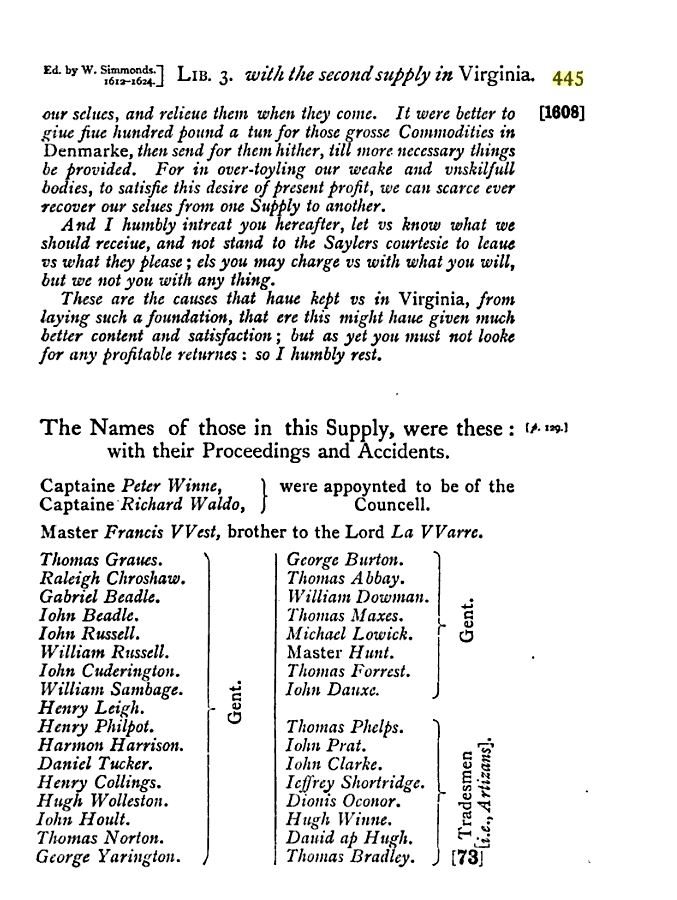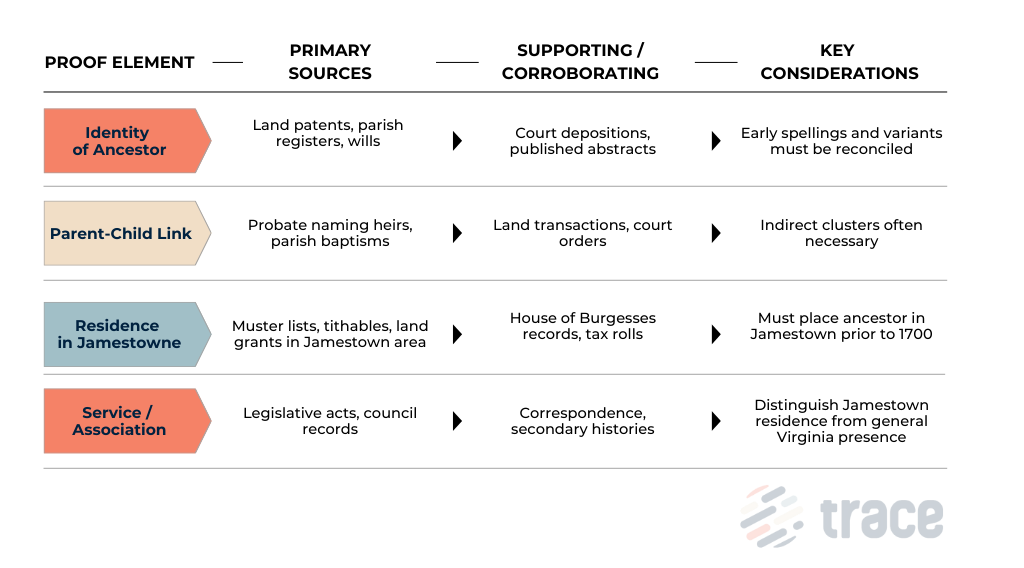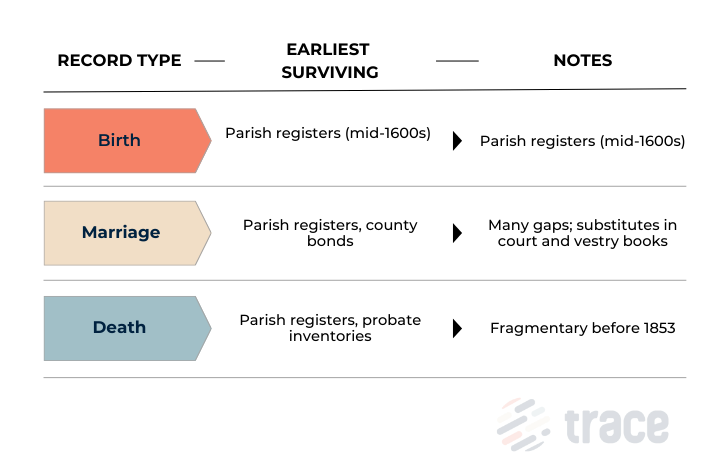Honor your earliest Virginia ancestors. The Jamestowne Society recognizes proven descent from those who lived in or were associated with Jamestown, Virginia, prior to 1700. Trace helps document your ancestral connections to these pioneering settlers and prepare a membership submission that meets society requirements.
Our professional genealogists compile your lineage documentation in the format expected by the Jamestowne Society. This ensures your application is clear, credible, and aligned with society standards.

Founded in 1607, Jamestown became the first permanent English settlement in North America and served as Virginia’s capital for most of the 17th century. Governance evolved from martial law to a representative assembly, the House of Burgesses (1619), and from a single fortified outpost into a network of plantations, parishes, and counties along the James River and beyond. These shifts created records at multiple levels: colony, county, parish, and private estate.
Record survival is uneven due to fires, warfare, and later courthouse losses. Still, crucial sources endure and can be correlated to prove descent:
Because the Jamestown era often lacks a single definitive record, proof of Jamestowne descent is typically requires correlation—assembling multiple independent sources into a consistent, well-cited conclusion. Understanding the colony’s administrative layers and geography is essential to finding the right documents.

Applicants must demonstrate direct lineal descent from an ancestor who lived or held land in Jamestown, Virginia, or who served in the governance of the colony before 1700. Each parent–child connection must be supported by credible, original documentation.
Note: Membership criteria and accepted evidence are established by the Society. While Trace aligns research with published guidelines, final approval rests with the Jamestowne Society.
Membership requires documentation for:
Trace applies the Genealogical Proof Standard (GPS): reasonably exhaustive research, full source citation, analysis/correlation, conflict resolution, and a reasoned conclusion.

1) Who qualifies for the Jamestowne Society?
Individuals who can prove direct descent from a person living in or associated with Jamestown before 1700.
2) What records are most often used?
Land patents, probate files, parish registers, and legislative journals are among the strongest sources.
3) What if records are missing?
We build indirect evidence cases using overlapping sources such as land adjacency, court suits, and vestry entries.
4) Can published genealogies be used?
Only as leads. We must corroborate with original records or authoritative record transcripts.
5) How long does it take?
Timelines depend on generation count and source availability. Colonial research typically requires more time due to fragmented records.
6) Will you prepare the final application?
Yes, we can prepare the application, but we do not submit it on your behalf. We organize the documentation to meet society submission standards.
7) Do you guarantee acceptance?
No. The Jamestowne Society makes the final decision. Our goal is to present the most complete, well-documented case possible.
We follow the Genealogical Proof Standard and best practices in evidence evaluation. We clearly distinguish original vs. derivative sources, primary vs. secondary information, and direct vs. indirect evidence. Conflicting or negative results are transparently discussed.
“Tracing my line back to Jamestown seemed impossible. Trace uncovered a land patent, vestry records, and a probate file that together proved my ancestor’s presence. My application was approved.” — Linda R.
“With so many missing records, I doubted we could ever prove descent. Trace’s team used chancery suits and tax rolls to build the case. Their packet met society standards and secured my membership.” — Jonathan P.

Contact Trace today to start Your Jamestowne lineage project!